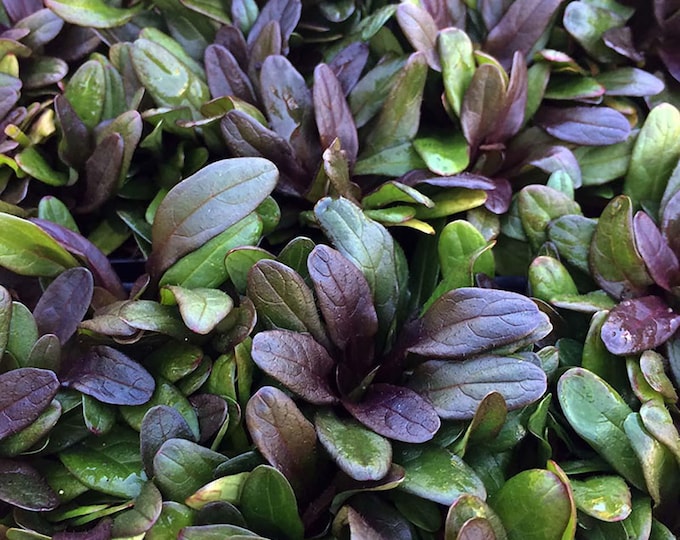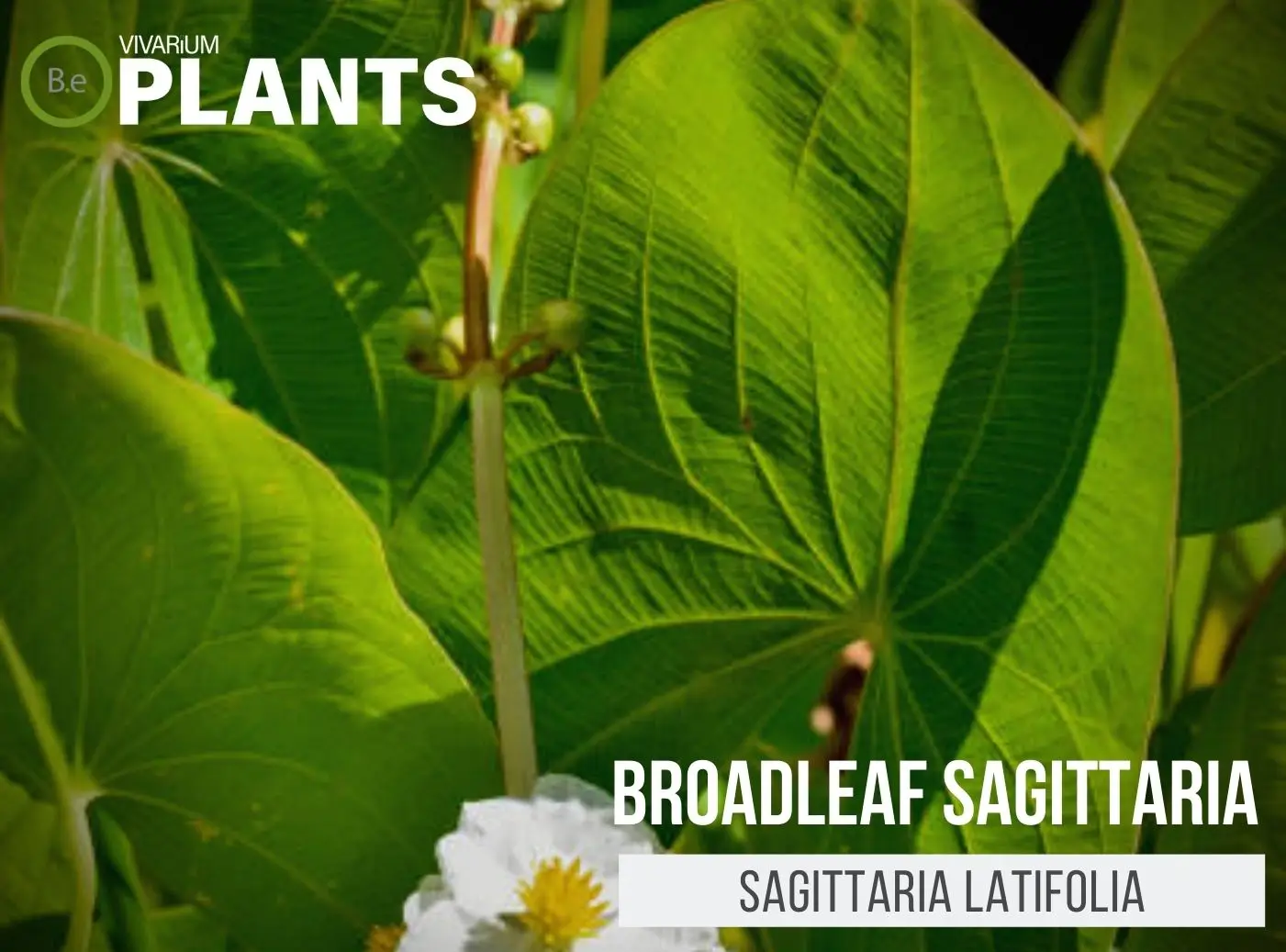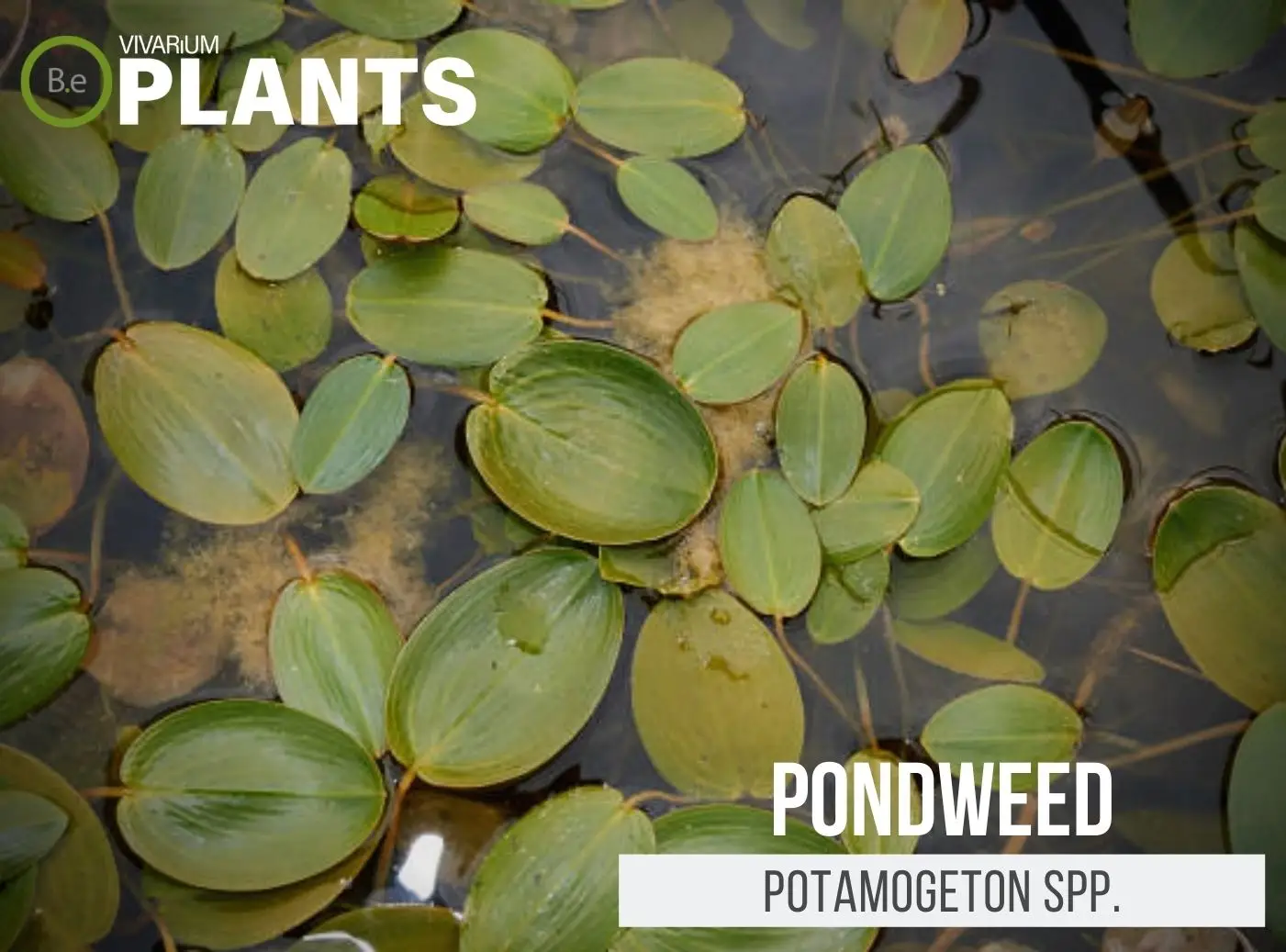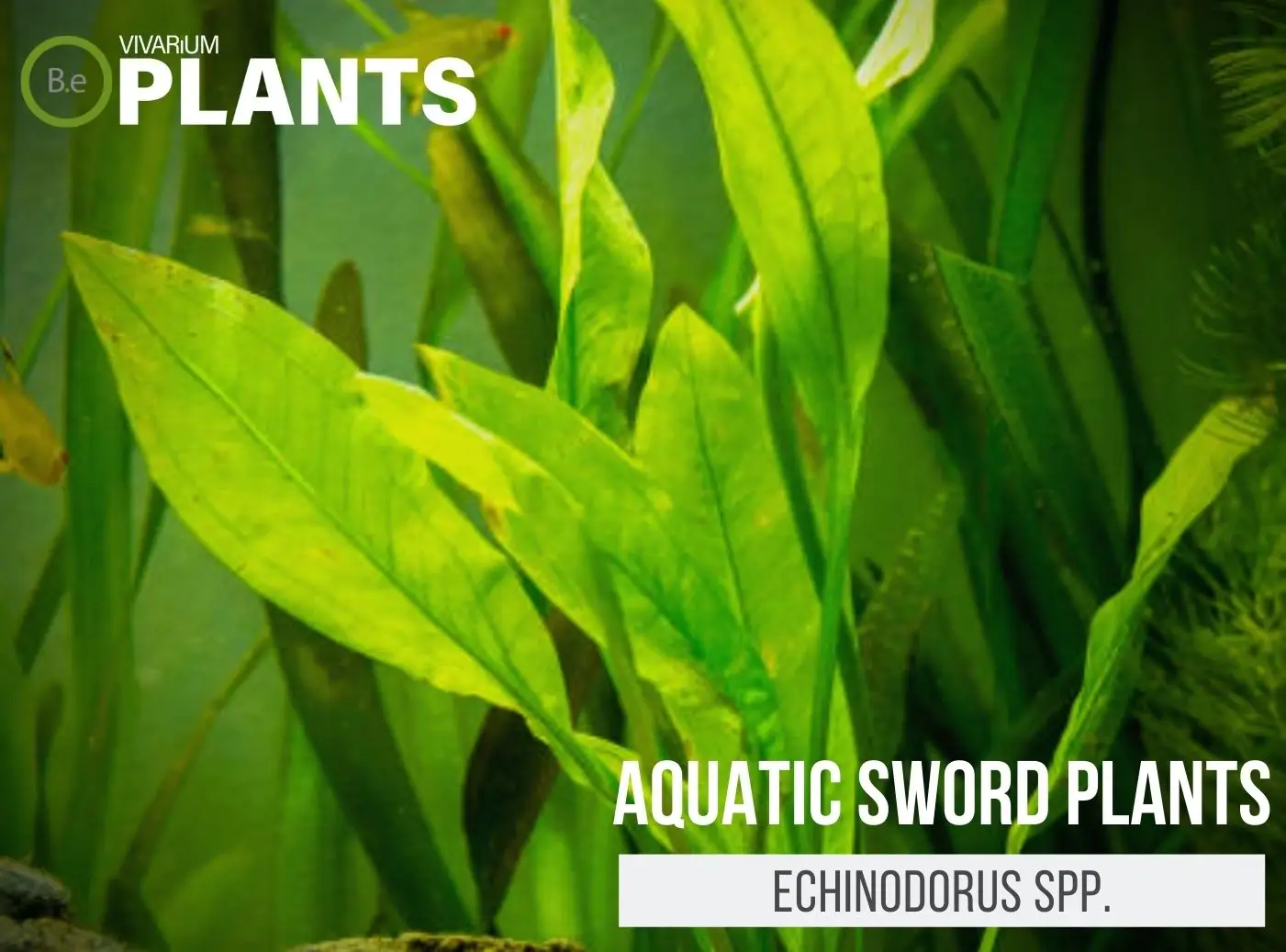Ajuga reptans, also known as the Bugleweed, is a versatile and popular carpeting plant used for both background and accent foliage.
Its lush dark green leaves provide a vibrant contrast to more muted backgrounds, and the leaves grow quickly to fill in any vacancies in the aquarium or terrarium.
Although this plant prefers moister and warmer temperatures, it is surprisingly tolerant to a variety of lighting and humidity conditions.
Quick Stats:
Scientific Name: Ajuga reptans
Family: Lamiaceae
Common Names: Bugleweed, Carpet Bugle, Blue Bugle, Carpet Bugleweed
Habitat: Europe and Asia
Height: 2 to 10 inches
pH Range: 5.5 to 7.5
Temperature Range: 70°F – 85°F
What Is Bugleweed?
Ajuga reptans is generally considered an evergreen perennial plant. This low-growing herbaceous plant spreads quickly, earning its nickname “Carpet Bugleweed” due to its ground–covering behavior.
Its light purple flower blooms from mid–March until late May. The leaves are dark green and slightly glossy.


Bugleweed Facts
Ajuga reptans have a unique way of spreading and developing into a tight, low-growing mat–like ground cover.
Not only is it great for adding lush greenery to a vivarium, but its roots can help stabilize soil making it a perfect addition to moist, rocky hillsides, or hard surfaces.
Large animals may need to be careful when walking or playing in the grass. The sharp and hard leaves can cause scratches and abrasions.
Description
Bugleweed leaves are rounded, about half an inch to an inch in size, and the color ranges from light green to dark green, with some blades having a barely visible light–purple hue.
The stems are thick and spread out from the base, growing to be about 2 to 10 inches in height. Its stems are covered with fine white hairs, and its creeping stems tend to root every now and then to create more dense foliage.
Habitat
Ajuga reptans is native to Europe and Asia but is widely distributed throughout the temperate regions of the world.
The preferred habitat of Ajuga is nutrient-rich, moist soils or stones, which provide plenty of nitrogen and organic matter.
In their native habitat, they will usually occur in deciduous forests underneath trees, or in grasslands and meadows.
pH Preference
Ajuga reptans prefers a slightly acidic to a neutral range of 6.0 to 7.0 although it can tolerate a variety of pH levels as low as 5.5 up to 7.5.
A pH level in this range is good for most vivariums, as it can sustain many of the microorganisms that make up a healthy tank.
Vivarium Type
The Bugleweed is quite an easy-going species. With that in mind, it will not be too complicated when choosing the type of enclosure it is grown in.
It is best to try and replicate the plant’s natural habitat as much as possible.
Doing so will make it easier to provide this foliage plant with its basic needs. The proper setup and theme of the enclosure will make a big difference to the overall look and health of the plant.
Be sure to choose setups that are moist and high in humidity. Here are recommended vivariums it will do well in:
-
- Paludariums – Half aquatic/ half terrain-based enclosure.
- Ripariums – Mostly aquatic-based enclosures with some terrain features present.
- Terrariums – Fully terrain-based enclosures with little to no aquatic features.
Vivarium Placement
This plant is best suited for terrestrial vivariums, although in some cases it can survive partially submerged.
When placed in a vivarium the Ajuga can be used as an accent plant for hardscapes, or an attractive background plant to add lush green foliage.
It does well under indirect light and moist substrates but appreciates the occasional misting.
Substrate
Bugleweed is tolerant of a variety of substrates such as moist soil, gravel, and sand, as long as it is well–draining.
When planting this species make sure the base of the stem is just below the substrate level, helping the roots make beneficial contact with the substrate.
Lighting
Ajuga reptans receive indirect light, but can also tolerate partial or full sunlight.
It can tolerate a wide range of terrarium lighting levels, but we recommend adding intermediate or higher-quality high-output LEDs to mimic its native environment and create a healthy balance in your vivarium.
Buy Bugleweed
When buying Bugleweed, there are a few things to keep in mind. Making sure the plant is healthy when purchased is essential for its success in a vivarium or pond. Vegetation that is already in poor conditions will have a very hard time adjusting to new environments.
Click the image below to learn more about the current price and other relative info about this plant.
Bugleweed Care & Propagation
Ajuga is an easy-to-care-for plant, requiring only a moderate amount of attention and maintenance.
Plant this species into moist soil or a damp substrate and make sure to remove dead or decaying leaves from time to time.
This plant can be propagated by separating its stems into small divisions and moving them to separate locations in the tank.
How To Grow
Bugleweed will grow best when placed in moist, nutrient-rich soil or a damp substrate.
It needs plenty of nitrogen and organic matter for healthy growth, and occasional misting or sprinkling will help encourage root growth.
Make sure to provide adequate light and plenty of water, as a dry tank will damage the foliage.
Water Requirements
Bugleweed prefers a moisture–rich environment to grow, so frequent misting or sprinkling is recommended.
A water hardness between 10 and 20 dGH is best, with a pH range between 5.5 and 7.5.
Plants Similar To Bugleweed
Adding diversity to an enclosure is key to an aesthetically pleasing setup. Try mixing up the look of your vivarium with different flora that can easily co-exist in the same types of environment.
Furthermore, if for some reason you find Bugleweed hard to acquire or would like to consider something similar to this vivarium plant… Here are other plants you might find will do well with or in place of Ajuga reptans:
Conclusion
Overall, Ajuga reptans is a great carpeting plant due to its tolerance to a variety of lighting and humidity conditions.
This low-growing evergreen provides lush green foliage that can be used in both background and accent placement.
With adequate water, light, and nutrient-rich soils, Bugleweed is fairly easy to maintain and an attractive addition to all kinds of vivarium setups.
Frequently Asked Questions
Yes, Ajuga (also known as Bugleweed) is tolerant of very wet soil conditions and even likes them.
Yes, Ajuga needs water. Regularly watering Ajuga plants helps them stay healthy and promote growth. How often Ajuga should be watered depends on the type of Ajuga and the climate in which it is grown.
Ajuga plants prefer moist, well–drained soil that is slightly acidic. A balanced potting mix is ideal for growing these plants.
Yes, Ajuga can be grown in a container as long as the container has adequate drainage and is large enough to accommodate the plant‘s root system. When growing Ajuga in a container, use a potting mix that is well–draining and rich in organic matter. Make sure to water regularly and fertilize every two to three weeks during the growing season.
Ajuga can die due to a variety of factors, including over–watering, inadequate drainage, improper light, high temperatures, pests, and diseases such as root rot, powdery mildew, and stem rot.




